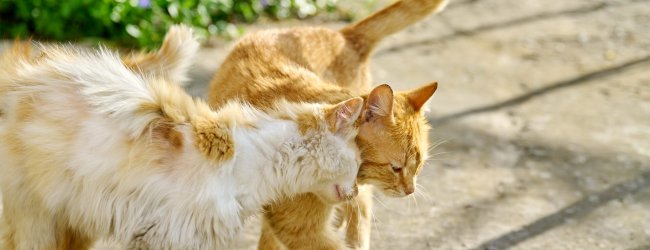Is My Cat Pregnant? What To Watch Out For
Here are the most common behavioral changes to look out for in a pregnant cat - so you can help your little buddy have a safe & healthy pregnancy.
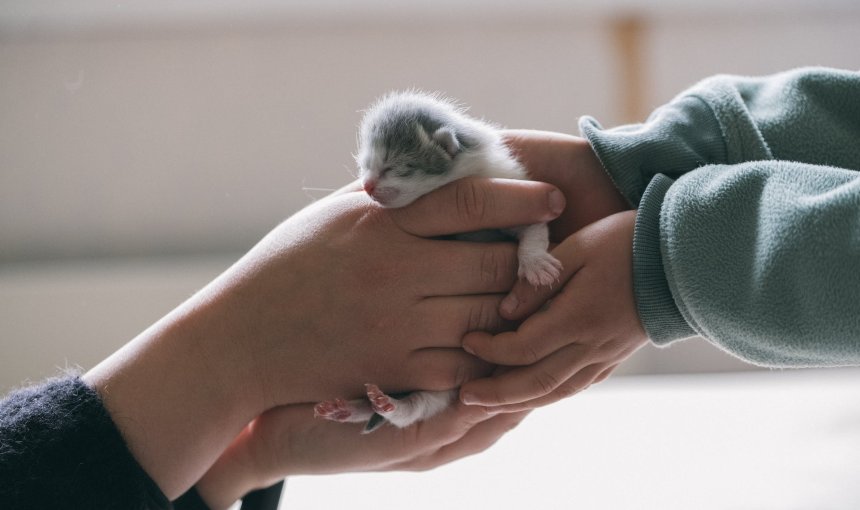
Let’s admit it: the thought of having a pregnant cat at home can bring its fair share of both “Awww”s and “Ahhhh!”s.
Because on one hand: cute, cuddly little kittens 🐱 On the other hand: the emotional roller coaster of responsibilities that accompany graduating from cat parent to cat grandparent.
(Think vaccinations, microchipping, registration, escape-proofing your home…the list goes on.)
But you might also be wondering: is my cat pregnant? And how to tell if my cat is pregnant in the first place?
Now the good news is that a pregnant cat might show distinct changes in behavior you should watch out for. (Like an increased tendency to go MIA from home – or just chilling out a bit more than usual.)
So once you know what signs to look out for, you can help your little buddy transition safely and happily to Mama Cat and help your new grand-kittens live their best life. Let’s get started!
- Why it makes sense to learn the signs of a pregnant cat
- How old can a cat get pregnant?
- How long is a cat pregnant?
- How do I know if my cat is pregnant? Signs to watch out for
- How to tell if my cat is pregnant – from a vet visit
- How to best care for a pregnant cat
- Set up a safe space – and enjoy being a cat grandparent!
Why it makes sense to learn the signs of a pregnant cat
Cats tend to be grade-A weirdos when they go into heat. But what to expect when your little buddy is expecting?
(After all, you do want to avoid an expensive vet visit only to be told your cat is just having a bad case of indigestion. Or has just gotten a bit chubbier over time.)
Plus, if you’ve decided against neutering them and your little buddy likes to explore the outdoors…there’s always the chance they might find the purr-fect mate for them, out there somewhere.
But is your cat really pregnant – or have they just packed on a few extra pounds?
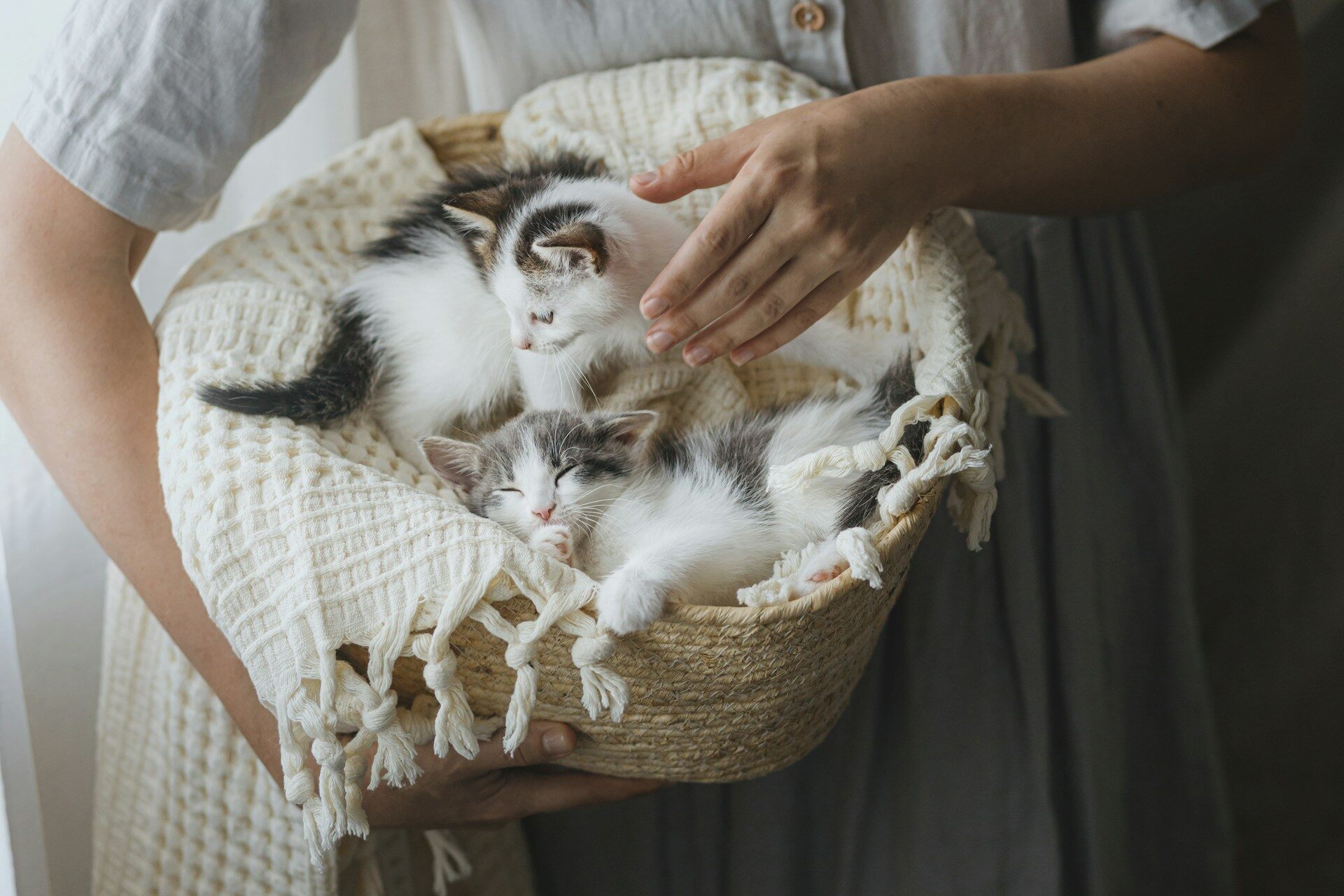
Now before we dive in, it’s important to note: not all cats go through the same phases in heat or pregnancy.
- Some might be bursting at the seams right off the bat – so you’ll catch on quicker.
- While others might hardly show any signs at all…until they’re literally at the delivery doorstep.
And the good news? Birth complications tend to be rare among cats.1
But even so – vets recommend staying vigilant and attending to your little buddy if they’re giving birth for the first time.2
Only a vet can 100% confirm that your cat is pregnant – but here are a few signs to keep an eye out for anyway.
Read more: Cat In Heat? What You Need To Know.
How old can a cat get pregnant?
Unlike other animal species, cats can become pregnant all year round.
Most cats are early bloomers – becoming sexually mature between 5-10 months. Which means that from then on, your little buddy will regularly go into heat if you don’t get them spayed.3
- Cats’ heat cycles tend to vary – but these do tend to be related to the length of daylight.
- So most cats tend to give birth between spring and fall. (And fewer during winter.)4
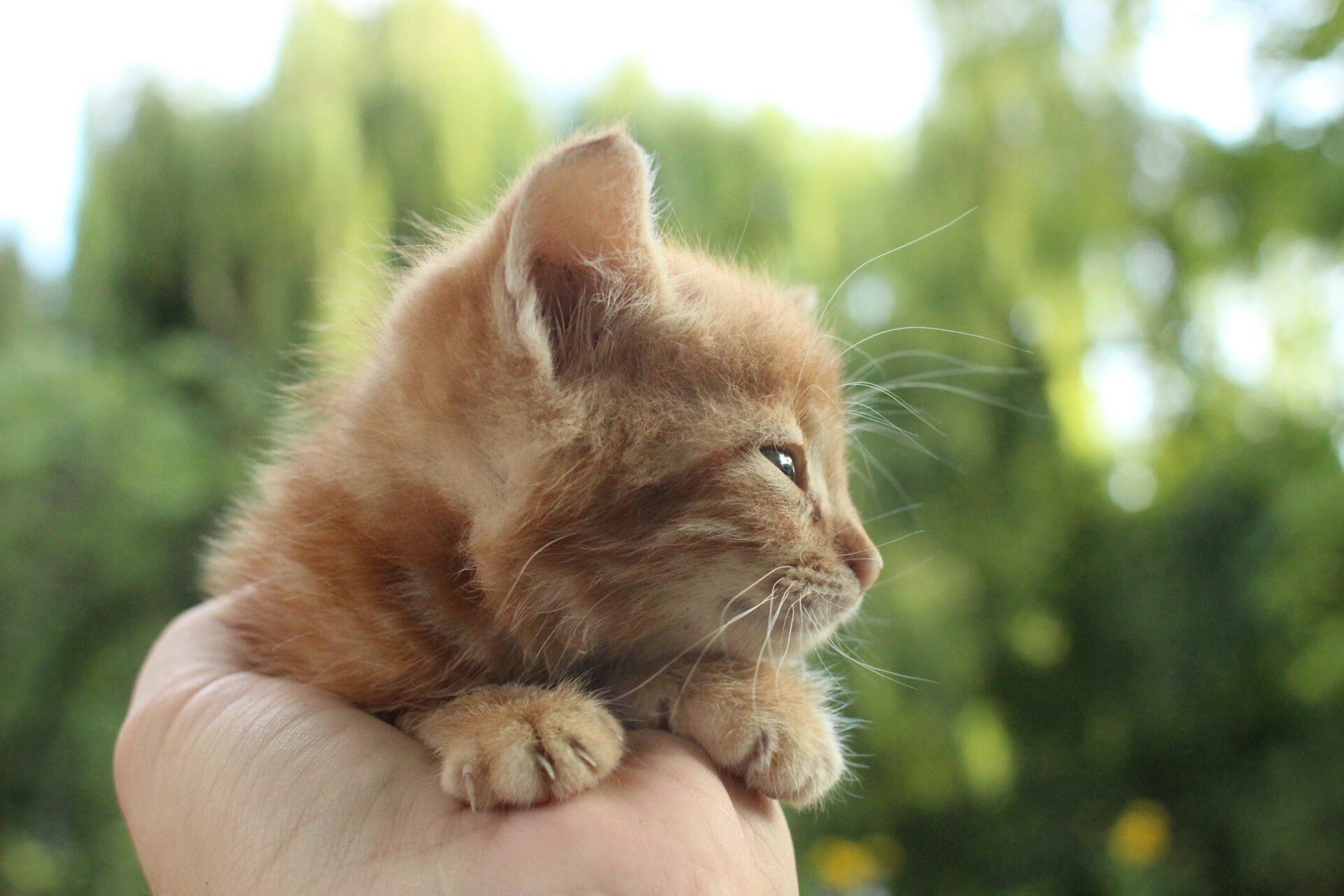
How long is a cat pregnant?
A pregnant cat usually has a gestation period of 63-68 days.5
- However, some cats have shorter pregnancies, averaging around 58 days.
- Others have longer ones, averaging 72 days.
Usually, most cats don’t show any signs of pregnancy until 2-3 weeks in. (So you have around a month to prepare!
During this time, your future grand-kittens are hard at work, growing in Mama Cat’s belly.
- In the first 2 weeks after fertilization, the embroys develop and implant in the uterine wall.
- By week 3, the kittens’ organs and bodies begin to develop.
- From week 4, the kittens begin to grow in Mama Cat’s uterus.
- By week 5, they already have fur and claws – and are about the size of a tomato.
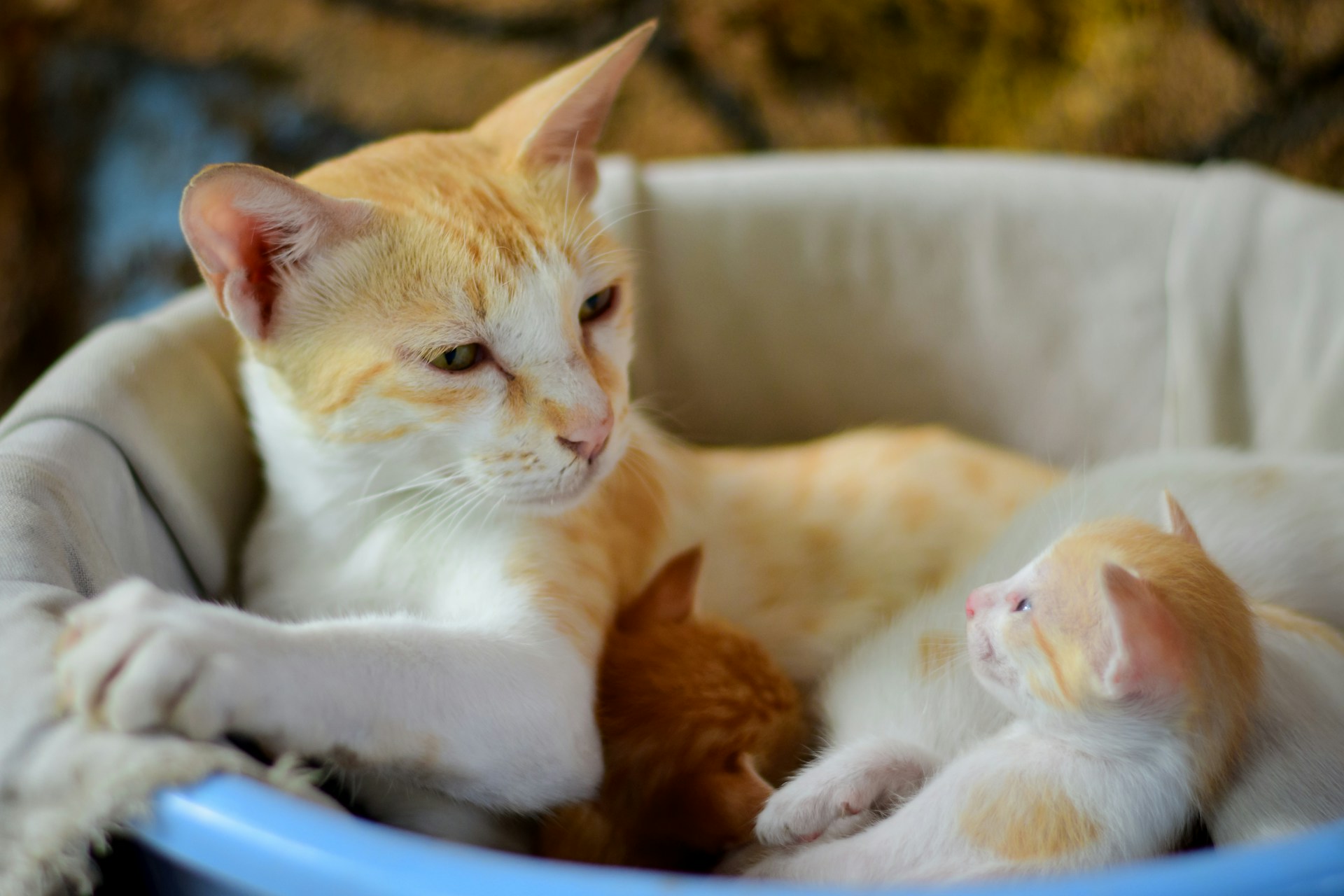
- By week 6, they kittens can already meow! Plus, their sexual organs have developed as well.
- By week 7, the kittens have almost reached their final form – plus, they’re getting more active in the uterus.
- By week 8, they’re fully grown and ready to be born.
Excited to meet your little ones? We are too! So here are some of the signs your cat is pregnant – and how you can care for them early on.
How do I know if my cat is pregnant? Signs to watch out for
Given how weird cats might be in general, it’s important to know what are the early signs a cat is pregnant – so you can create a safe, cozy nesting spot for them at home.
⚠️ Else your cat is more likely to wander off miles away from home to find that perfect, safe, secluded spot – and birth her litter all by herself.6 Where you might not be around to intervene if they run into any complications.
Read more: Why Is My Cat Hiding? 5 Reasons For A Hiding Cat
Changes in your cat’s behaviors
Much like humans, a pregnant cat might display a bunch of behavioral changes that depend on their temperament and personality.
- Some cats get clingier than usual – super affectionate and cuddly.
- Others grow more withdrawn – hiding in weird spots around your house or outdoors
- Due to hormonal changes, your cat might also experience some mood swings. So they might be more irritable than usual – hissing and batting at you or your other pets.
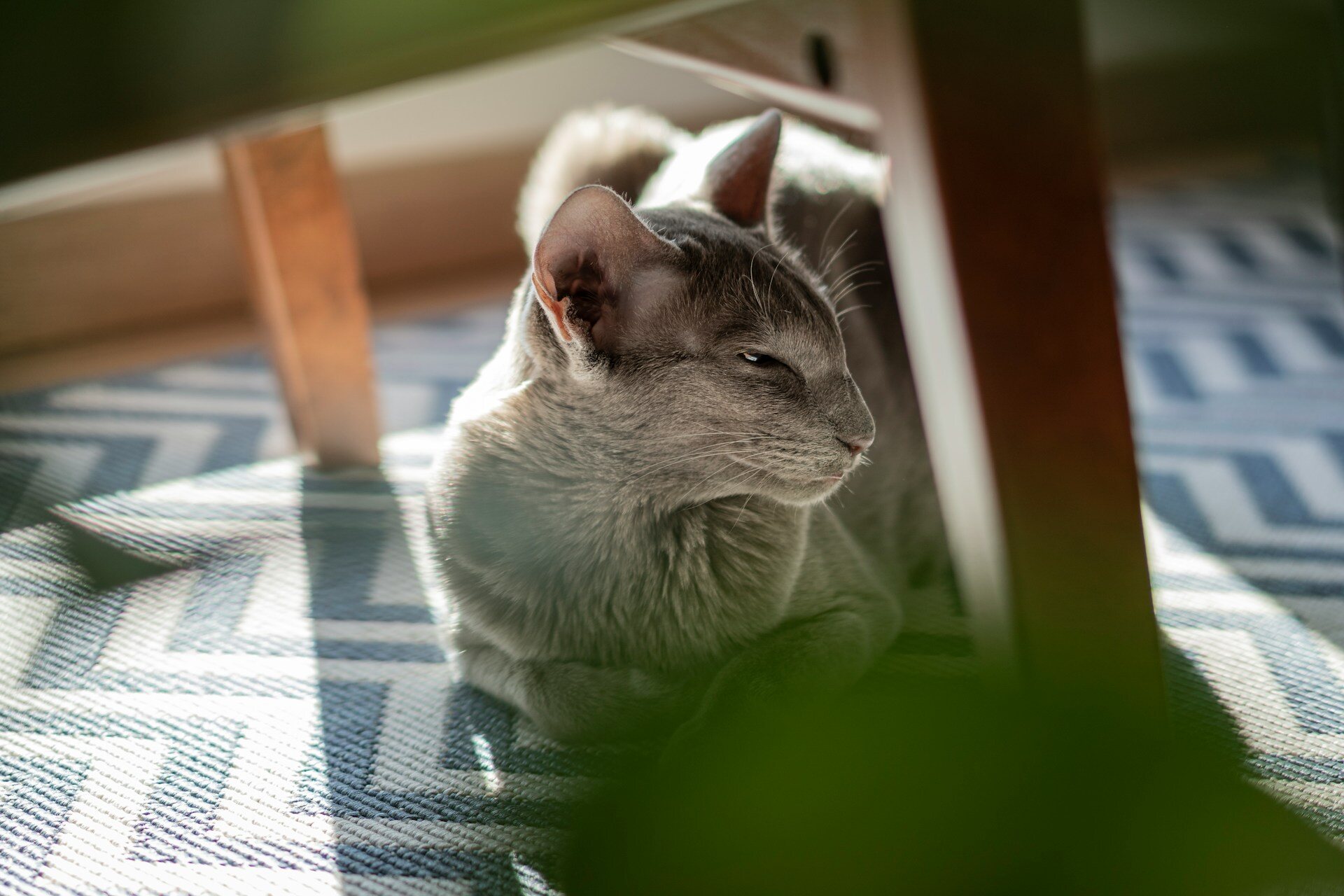
💡 Ever wondered why cats make biscuits? I.e., press down with their paws on a surface – kind of like a baker kneading dough? It could actually be an early sign they’re pregnant!
Read more:
- Why Do Cats Make Biscuits? (Aka, The Feline Need To Knead)
- Why Do Cats Hiss? Do’s, Don’ts & How to Respond
Changes in your cat’s appetite
Much like in humans, your cat’s appetite might soar or dip during pregnancy. They may either eat more – or in some cases, less – than usual.
In general, it’s fine if their feeding needs change during this period. (Since they’re eating more calories to ensure their kittens grow healthy and strong.)
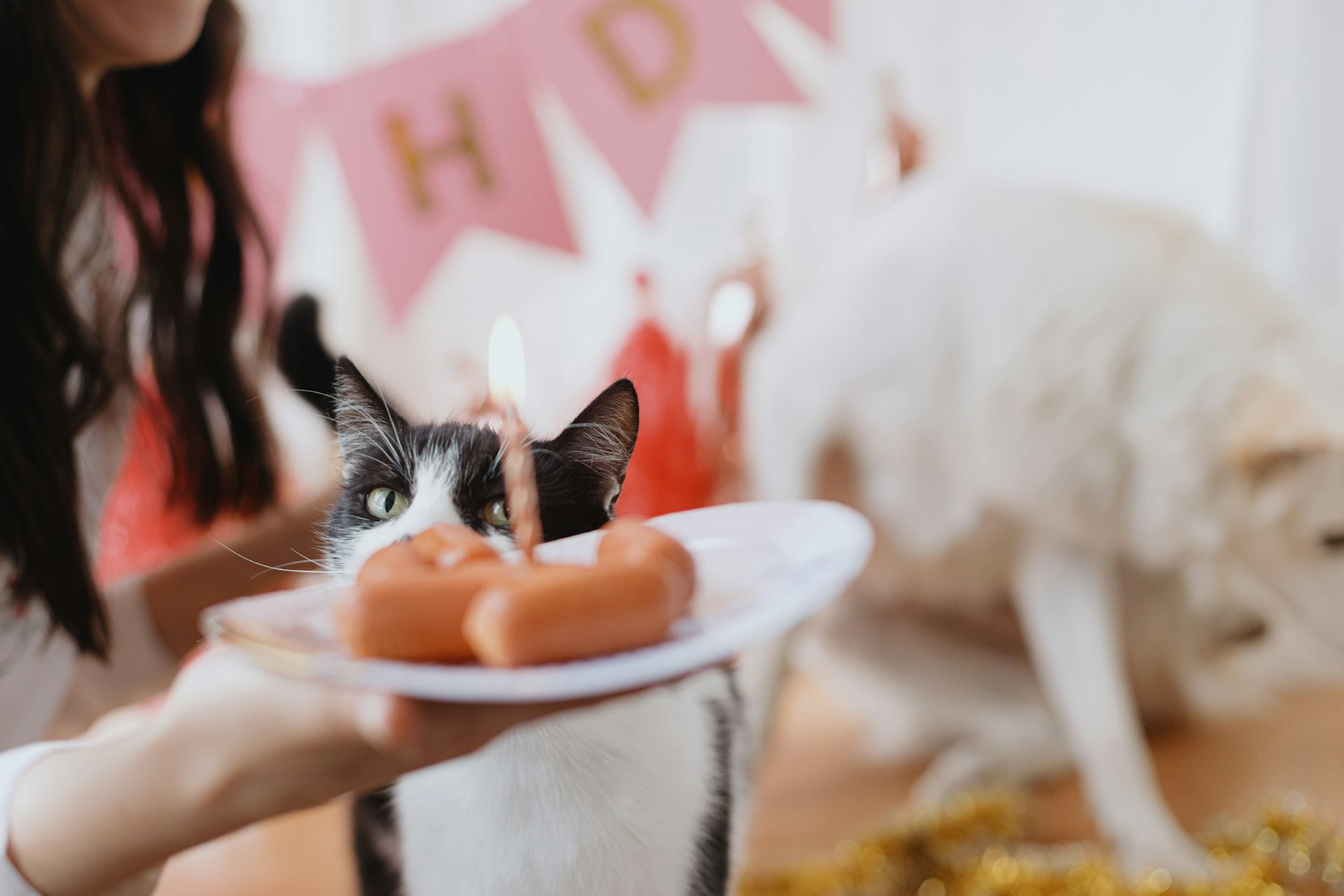
⚠️ Just make sure you’re monitoring your kitchen when you’ve got a pregnant cat at home. Many human foods – including onions, mushrooms, garlic, and anything with artificial flavoring – can be fatally toxic to cats.
Read more:
- What Human Foods Can Cats Eat? (And How Much?)
- What Can Cats Not Eat? (And Why Not?)
- Cat Feeding Schedule: How Often Should I Feed My Cat?
Nausea & vomiting
As with us humans, cats can experience nausea and vomiting during the first few weeks of pregnancy. (As a result of hormonal changes.) This is completely normal and you don’t need to be concerned.
However, if you’re suspecting your pregnant cat might be vomiting as a result of having eaten something they shouldn’t have – get in touch with your vet for an emergency checkup immediately.
Changes in your cat’s weight
One of the first signs of pregnancy in cats? Weight gain. But it can be a bit difficult to spot in the first weeks, since it tends to be slow weight gain.
Just make sure to feel around your cat’s belly to see if it’s getting firmer or rounder. You might initially notice a mild swelling or increase in abdominal girth.
💡 Weighing your cat on the regular can help you spot any changes quicker. (Especially if they’re already a bit on the chubbier side – or just a larger cat breed, like a Maine Coon or British Shorthair.)
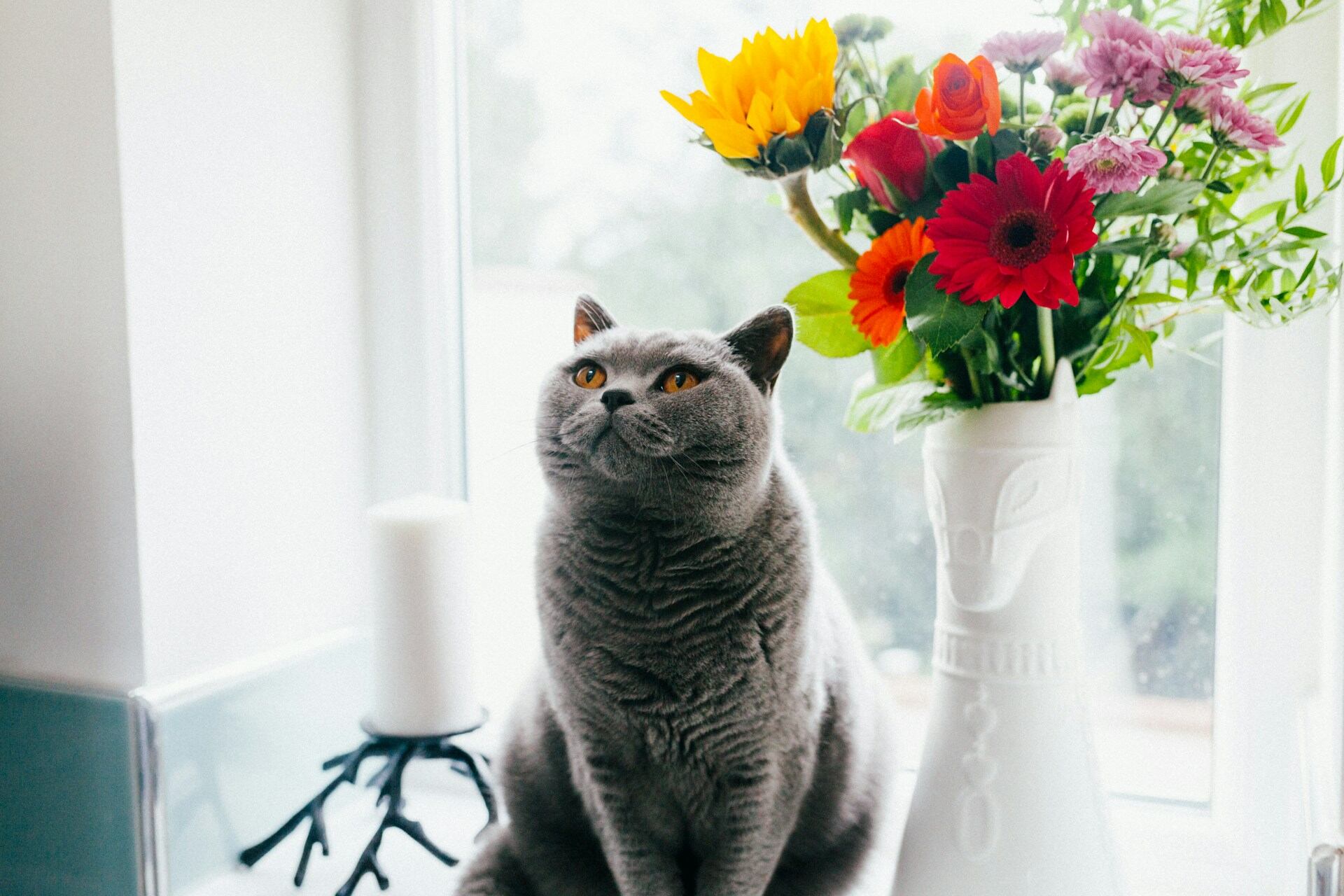
Read more:
- Cat Body Condition Score: Is Your Cat Underweight Or Overweight?
- Cat Obesity: How To Help An Overweight Cat Lose Weight
Physical changes
As the weeks pass, your cat’s body will change during pregnancy.
- Initially, their teats will grow in size and change their color, growing darker and more visible than before.
- Sometimes, cats might develop small bumps along the side of their belly. (These are the milk ridges – indicating Mama Cat’s body is producing milk for the kittens.)
- Your cat’s belly slowly enlarges and gradually appears distended. It may bulge, especially at the back.
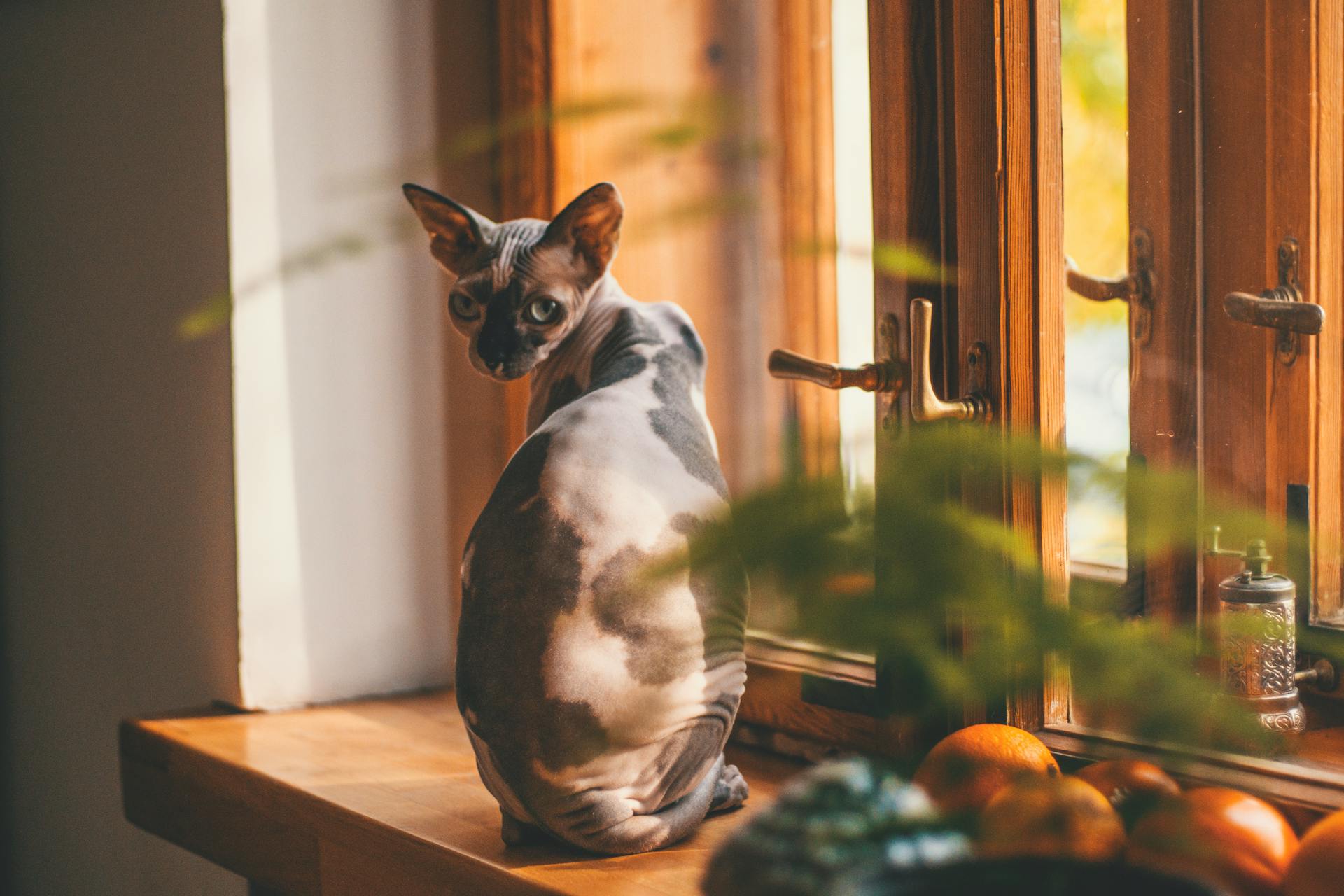
With time, you might even be able to feel the kittens’ movements when you place a hand on your cat’s belly! Just be careful if you do, since a pregnant cat’s abdomen can be very sensitive.
Changes in your cat’s sleep & activity
Cats are already super sleepers – clocking in between 12-20 hours of sleep per day! However, pregnant cats tend to sleep even more due to hormonal changes. So that they can help their kittens grow healthy and strong.
In fact, another early sign of pregnancy in cats is a dip in their activity over time.7 Your cat might seem:
- Sleepier than usual
- Sleeping during the daytime (or when they’re usually more active)
- More lethargic than usual
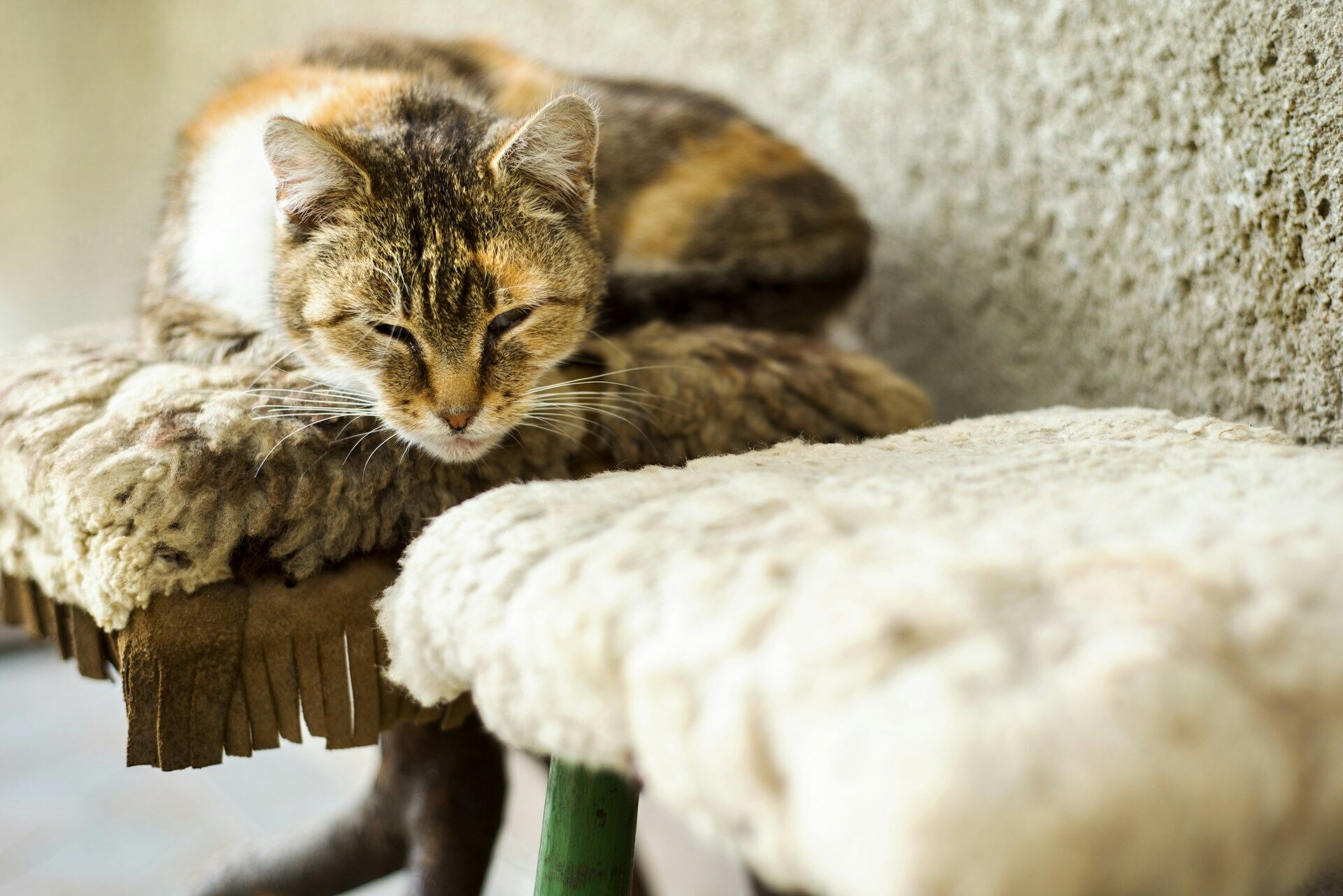
💡Vets actually recommend tracking your pets’ activity over time – so you can catch on to a health issue early on.8
Because if your cat is already more on the “chill” side, it can be easy to miss a dip in their daily activity or how well they’re sleeping.
Which is why cat parents around the world – just like you – are relying on Tractive’s Sleep Tracking and Activity Monitoring features.
So they can take a more active role in their cat’s health and wellbeing – and stay one step ahead of a medical emergency.
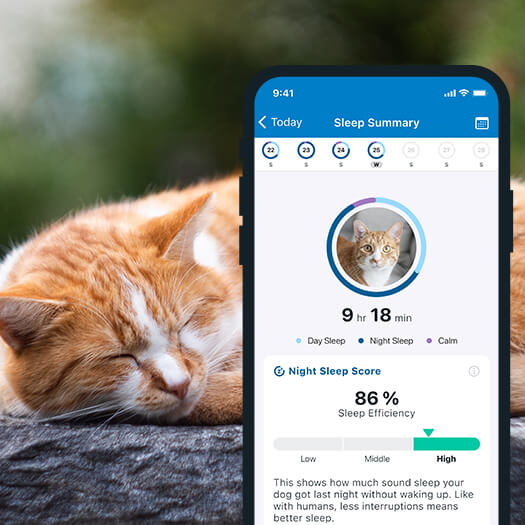
How does it work? Simple. Your trusty Tractive device comes equipped with a built-in motion detector. Picking up on your cat’s active minutes per day – and building a long-term picture over time.
So the minute your cat’s sleep cycle gets disrupted or there’s a dip in their activity, you’ll get a Health Alert reminding you to get them to a vet for a checkup.

“It can be easy to miss out on changes in your pet’s regular activity – or just if they’re on the move more or less than usual.
So we’ve set up Activity Degradation alerts for when your dog or cat’s active minutes drop significantly. They can help you intervene in a situation where your pet might be struggling with an infection or even just pain.”
– Sebastian Raab, Product Manager at Tractive & occasional pet sitter
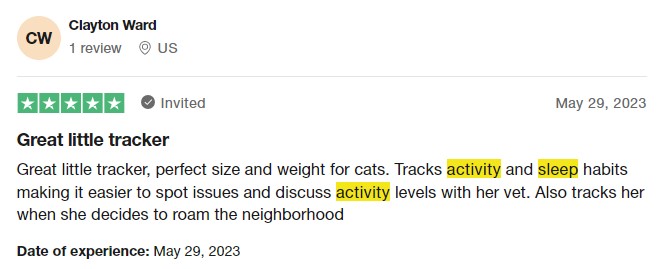
How to tell if my cat is pregnant – from a vet visit
Cats tend to be pregnant for an average of 63 days before they deliver their kittens. After around 28 days, your vet can confirm the pregnancy with an ultrasound scan.9
- Want to know how big your litter of grand-kittens is going to be? An X-ray might be more helpful. (After around 42 days.)
- From this point onwards, you can even see the sexes of the kittens and whether they’re in a safe position for delivery.
In general, dropping a visit to your vet – after you’ve picked up some of these early pregnancy signs – is the best way to confirm 100% that your cat is pregnant.
Your vet can help check up on your cat and provide you the reassurance that everything’s going smoothly with both Mama Cat and her kittens. (Or pick up on any complications early on.)
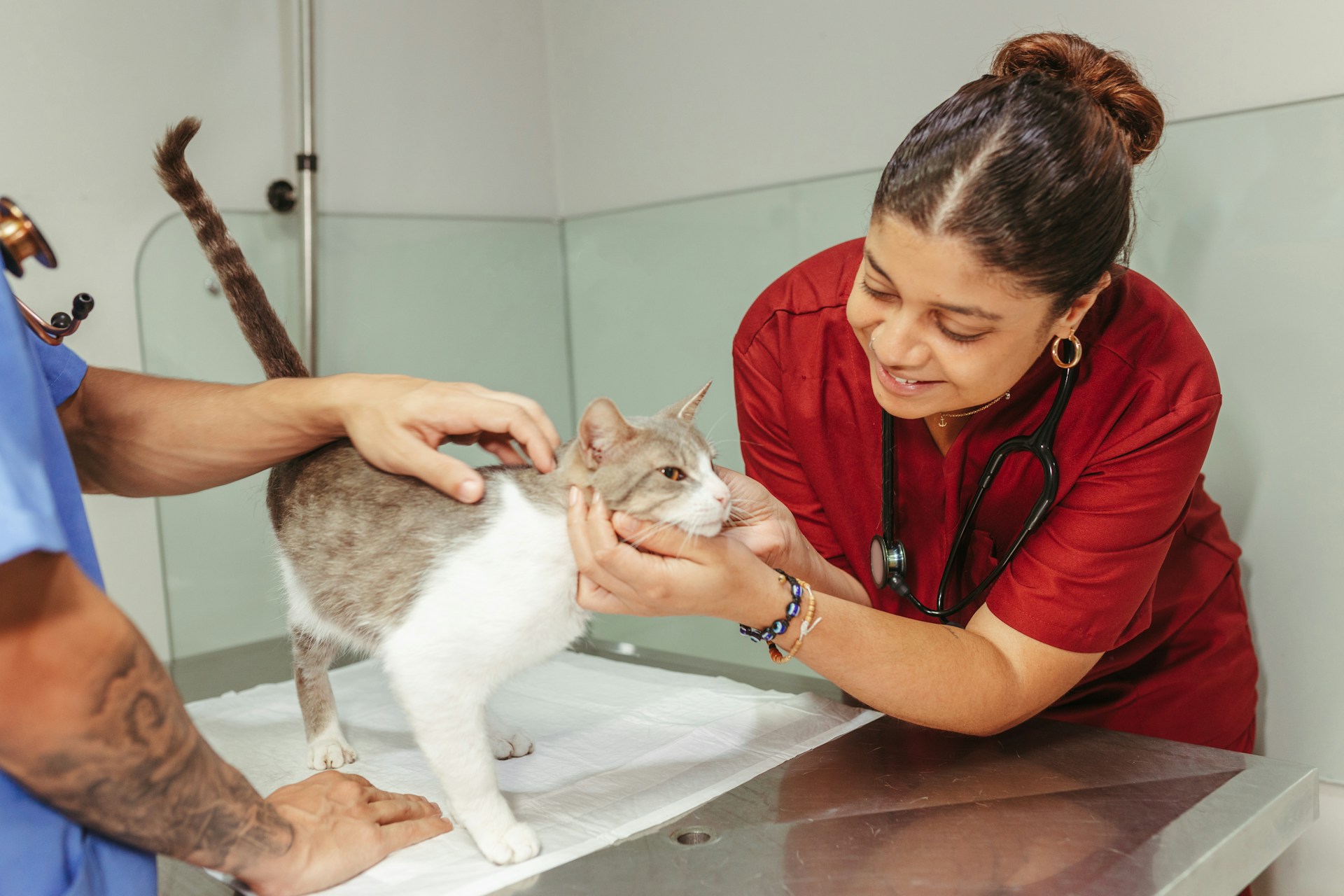
How to best care for a pregnant cat
Just got the good news? First off, congratulations! Secondly, don’t panic. Your cat knows instinctively what to do – and what’s best for themselves and their kittens.
That said, pregnancy can still be a stressful time for your cat. (Much like with us humans.) So here are a couple of steps to support and care for a pregnant cat during this period.
Stay on top of your cat’s food & fluids
A healthy, balanced diet is key to a safe, smooth pregnancy and delivery. (For cats and humans alike.)
So pay extra attention to every bite, lick, and taste your cat takes during this time. It’s vital they’re getting all the nutrients and calories they need to both nourish their kittens – and also maintain their own weight.10
Here are a couple of high-quality micronutrients your cat’s diet should include during pregnancy:
- Protein. Cat’s are obligate carnivores. Which means their bodies are primarily built for digesting meat. Plus, high-quality animal proteins – from meat or fish sources – are ideal for helping the kittens grow healthy and strong.
- Fat is an important source of energy and should be present in your cat’s food in sufficient quantities. Just make sure it’s a balanced portion and doesn’t dominate in your cat’s meals.
- Vitamins A, D, and E are especially important during pregnancy and breastfeeding. Plus, they help the kittens grow as well.
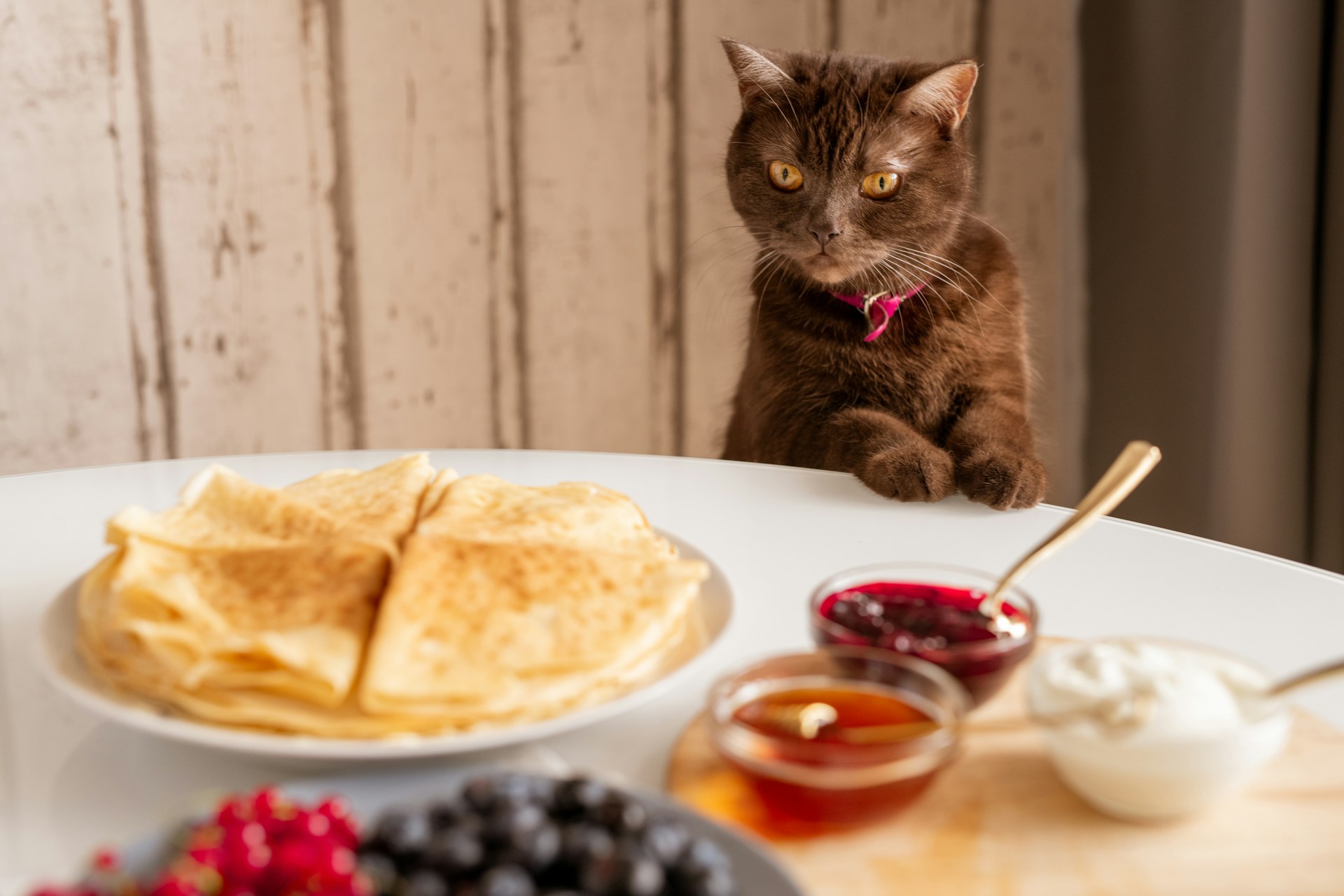
- Folic acid and vitamin B complexes help the kittens’ nervous systems grow.
- Iron-rich food can help keep your cat’s circulatory system healthy during pregnancy.
- Fiber-rich foods can help prevent constipation during pregnancy.
- Calcium- and phosphorous-rich foods help the kittens’ bones and teeth develop. (Just keep the ratio of calcium to phosphorous balanced.)
- Taurine is an essential amino acid that helps keep cats’ heart and eyes healthy.
Monitor your cat’s weight
If your cat is overweight, there’s a chance it might lead to birth complications.
Likewise, if they’re underweight, it could lead to difficulties producing enough milk to safely breastfeed her litter.11
Make sure to stay informed on what’s a healthy weight range for your cat – and take steps accordingly. Your pregnant cat might be on snooze-mode most of the day, but you can still ensure they’re:
- Getting enough exercise with some gentle indoor games (and hitting your target active minutes score)
- Eating enough calories to sustain a healthy pregnancy
- At a healthy weight by regularly checking their body condition score
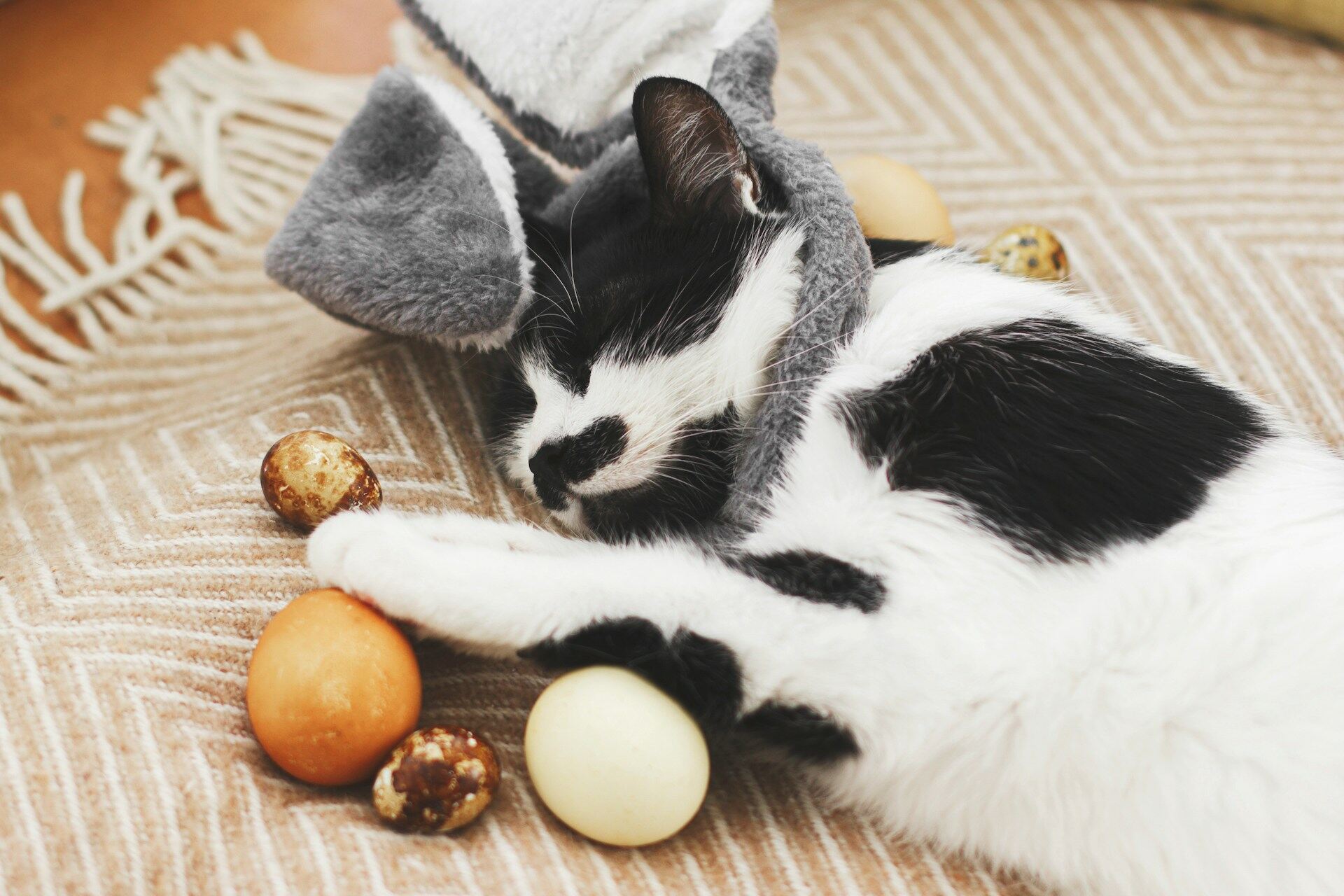
Read more: How To Get A Cat To Exercise: Keeping Our Feline Friends Happy and Healthy
If you’re not sure how to proceed, get in touch with your vet for their advice.
Keep your cat worm-free
Even if your cat’s been eating a high-quality diet, there’s always the chance they might lose all these nutrients through intestinal parasites, like worms.12
You can prevent this by getting your cat de-wormed at your vet’s clinic – and monitoring their outdoor movements. (To ensure they aren’t hunting in any dangerous spots or raiding your neighborhood garbage dump.)
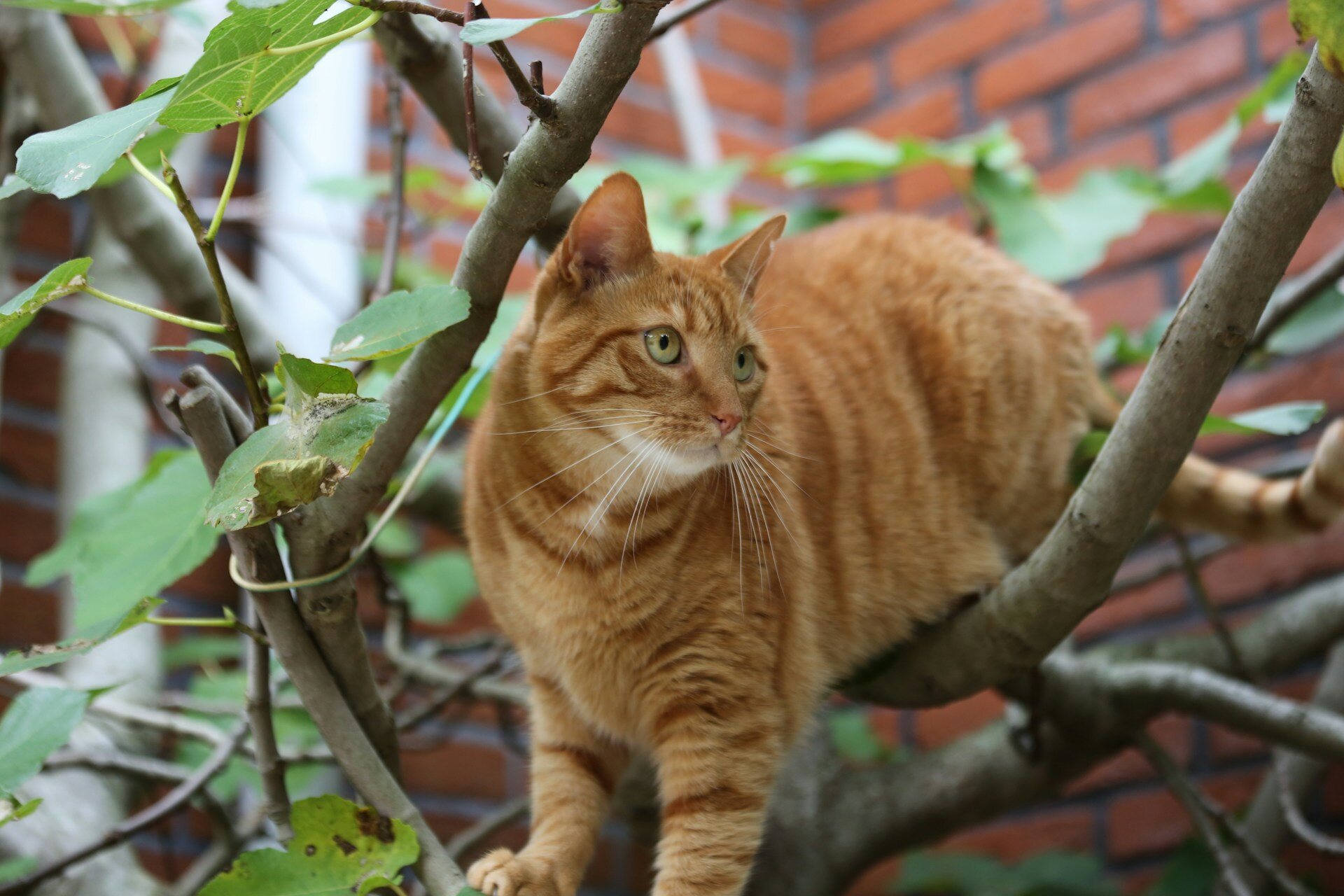
💡A cat GPS tracker can help you track your cat’s movements in real-time over an unlimited range.
So with just a glance at your phone, you can check where your cat’s off wandering – and if it’s too far from safety.
With your trusty Tractive device, for example, you can also set up a “safe zone” around your home and backyard.
Now the minute your cat tries to step outside of it, you get an instant escape alert on your phone. (Helping you intervene before they wander off too far from safety.)
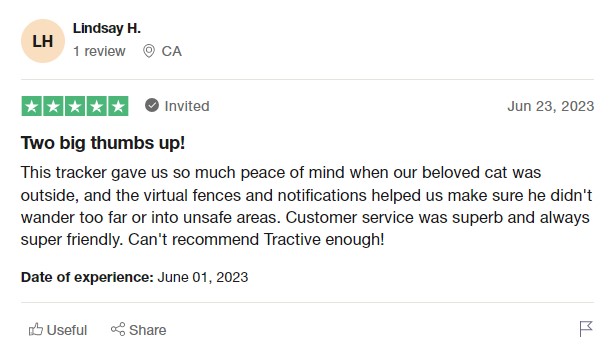
Let your cat chill a little extra
As the kittens grow, it’s just as important to give your cat plenty of rest during their pregnancy.
Do your best to reduce any stress they might face around this time. (Including big changes, like moving houses, or even smaller ones, like a change in routine.)
A change in your cat’s regular habits or routine can cause them major anxiety and stress. (Even when they aren’t pregnant!) Which can have a terrible impact on how the kittens grow.

⚠️ In some worst case scenarios, stress can even cause a cat to miscarry.
So help your cat get some extra downtime by:
- Providing them with comfortable, warm and quiet places to sleep
- Protecting them from loud noises, which can trigger anxiety (like the sound of your vacuum cleaner)
- Avoiding unnecessary visits or play dates during pregnancy
Most importantly, track your pregnant cat’s sleep. You want to ensure they’re getting all the quality sleep they can get – so that both they and their kittens can emerge healthy and strong from the pregnancy and birth.
Read more:
- Your 100% Stress-Free Guide To Moving Cats To A New Home
- Why Do Cats Sleep With You? Dealing With A Cat In Your Bed
- Why Do Cats Sleep So Much? Cat Sleeping Patterns, Explained!
Enjoy some quality time with your cat
Some cats get clingier and more affectionate during pregnancy – demanding your attention. So around this time, indulge your cat and spoil them rotten. Give them all the attention you can when they clamber on you or knead biscuits on your shirt.

Cuddling and spending time with your cat helps give them a sense of comfort and security around this time. If you hear them purring, both Mama Cat and her kittens are relaxed and happy by your side.
Read more: Why Do Cats Purr? The Mystery Explained!
Figure out your cat’s favorite hiding spots
Whether you’ve got an indoor cat, outdoor cat, or an indoor-outdoor cat – they’re going to be searching for a safe, secluded area soon enough.
Why? Because when cats are close to labor, they’re more likely to search for a spot to hide in – where they can safely deliver their kittens.
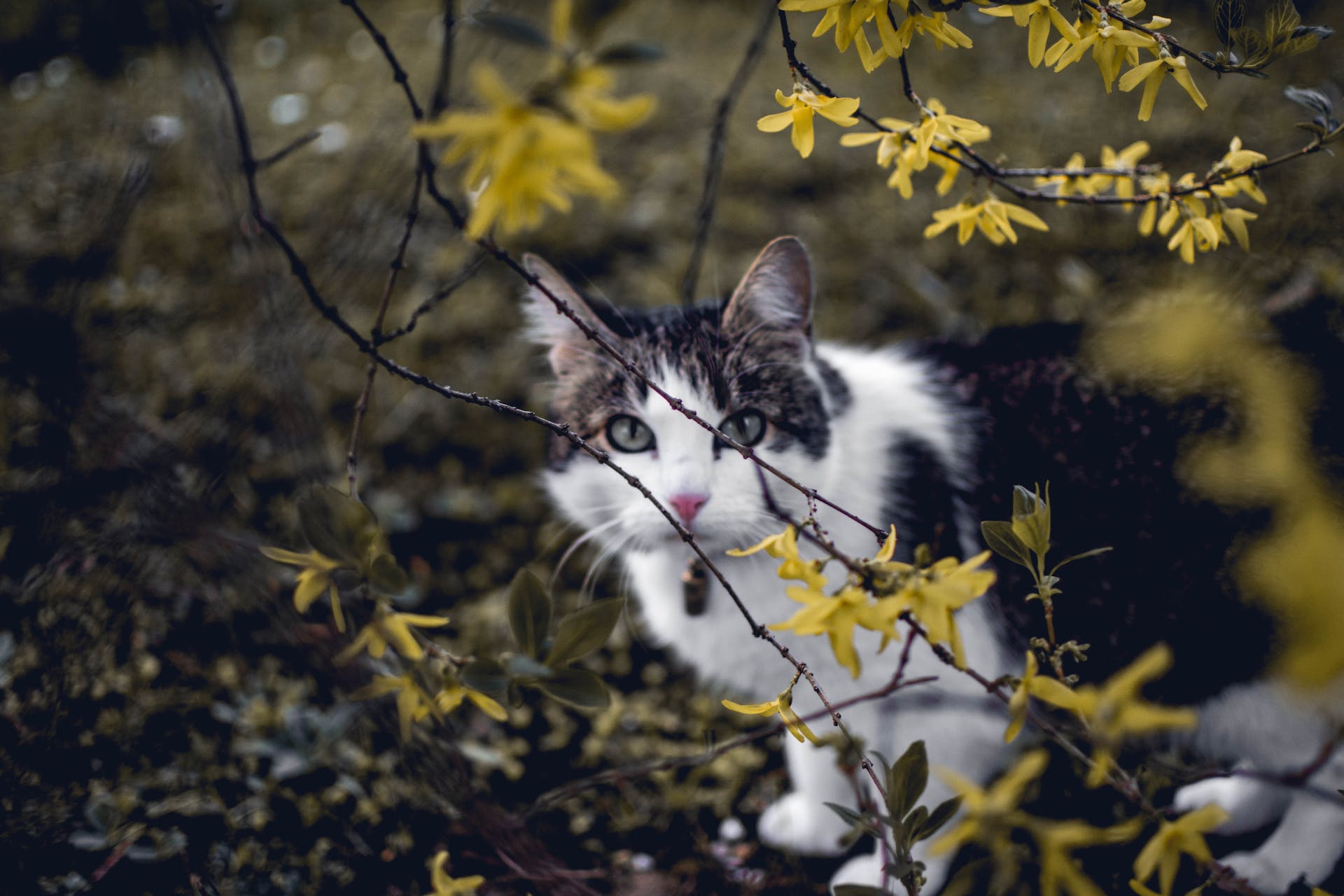
💡This behavior draws from cats’ evolutionary instincts. Think about it: a pregnant lion or leopard would be vulnerable while giving birth. So they’re more likely to find a secluded spot where they might be safe from other predators.
Now if you’ve set up a safe, secure area indoors for your cat to deliver their kittens – great. If not, you might find them wandering outdoors to give birth elsewhere.
Which may be a cozy spot in your backyard…or miles away from safety.
It’s why figuring out your cat’s favorite hangout, hiding, and hunting spots can be a lifesaver. Because now if you’re dealing with a lost cat, you know where to look first.
And the best part? Tractive’s Heat Map & Location History stores your cat’s favorite spots for you securely – even if your cat’s tracker loses cell coverage for a little while.
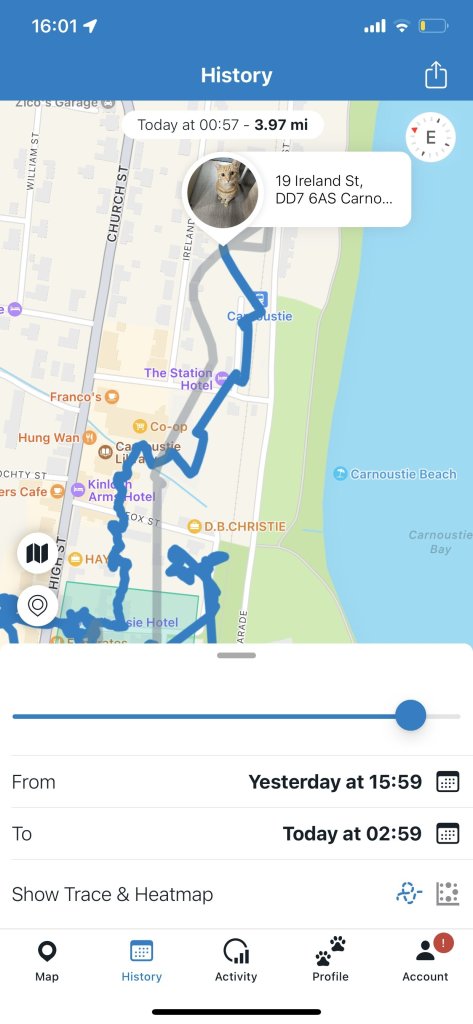
Now if your pregnant cat has wandered off to a neighboring barn to deliver their kittens, you can pick up on where they’ve headed – and help them get the care they need.
In fact, Tractive’s Heat Map & Location History even saved the lives of a family of sick kittens rescued by the San Diego Feral Cat Coalition.
With a tracker attached to Mama cat’s collar, they were able to locate where she’d dropped each of her babies – pick them up, take them home, clean them, feed them…and rehome them into loving forever homes.
Read more: This Family of Sick Kittens Was Rescued With The Tractive GPS
More ways to keep track of your pregnant cat
No matter how near or far your cat likes to roam, your trusty Tractive device has you covered. Besides Health Alerts and Location History, our cat GPS tracker helps you:
- Track your cat in real-time and over an unlimited range.
- Set up “safe zones” and “no go zones” – and get an instant escape alert if your cat’s leaving one or entering the other
- Locate your cat indoors with our Bluetooth-powered Radar Mode, Augmented Reality, or even Light & Sound functions.
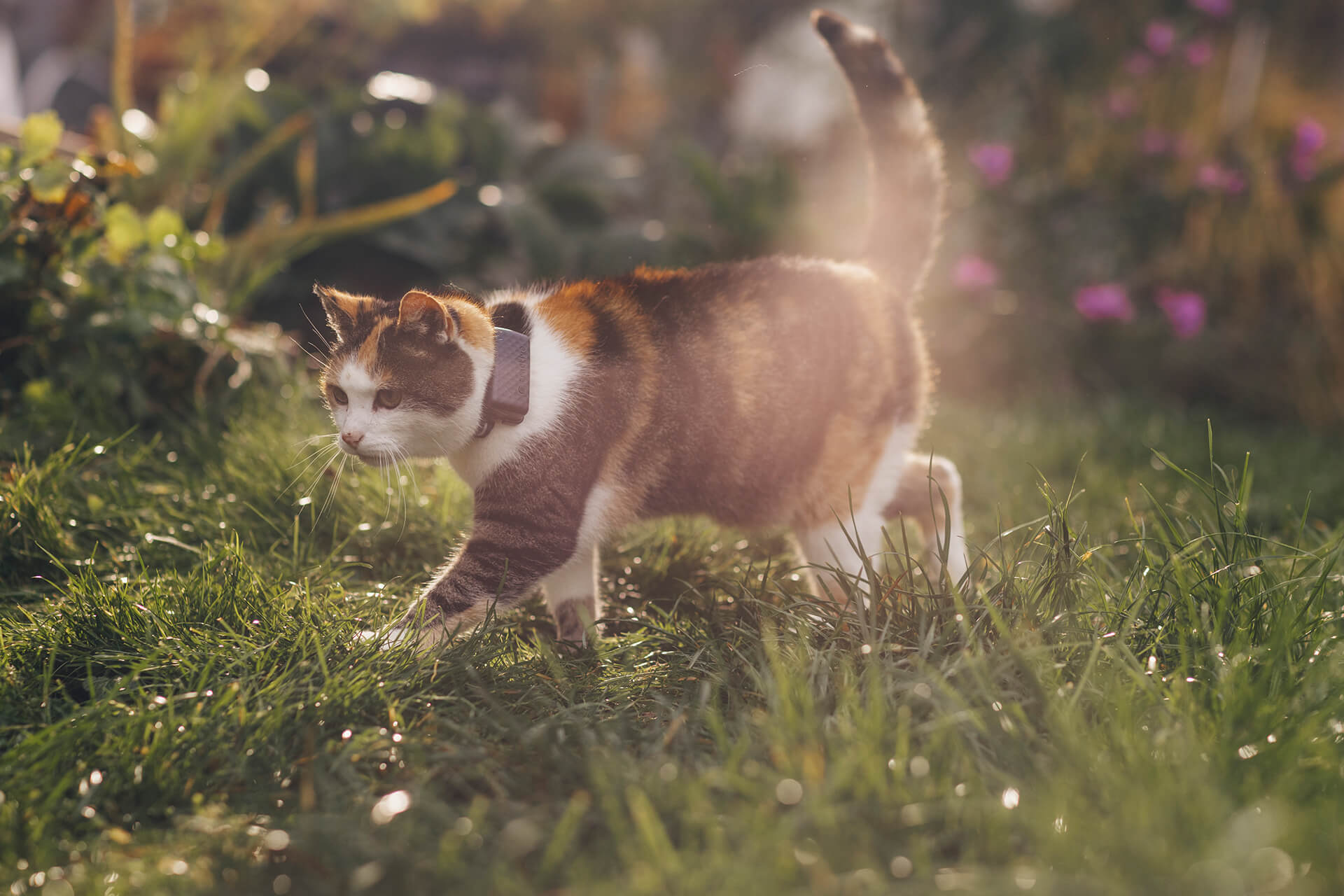

“Tractive is the #1 cat GPS tracker in the industry. And it’s the highest quality cat tracker you can find.
I was able to set the safe zone as my house area and once my cat gets outside, I get an alert right away.
In fact, it probably saved my cat’s life that time she chased a bird and got lost. She was scared and I was able to find her with the help of the GPS tracker.
Tractive’s chip frequently calculates your cat’s location and is updated on the map every 2-3 seconds. Furthermore, the LED will help you guard your furry friend at night.”
– Clair Chesterman, Owner of CFA and CCA-registered cattery and fostering company, FluffyMeowPaws
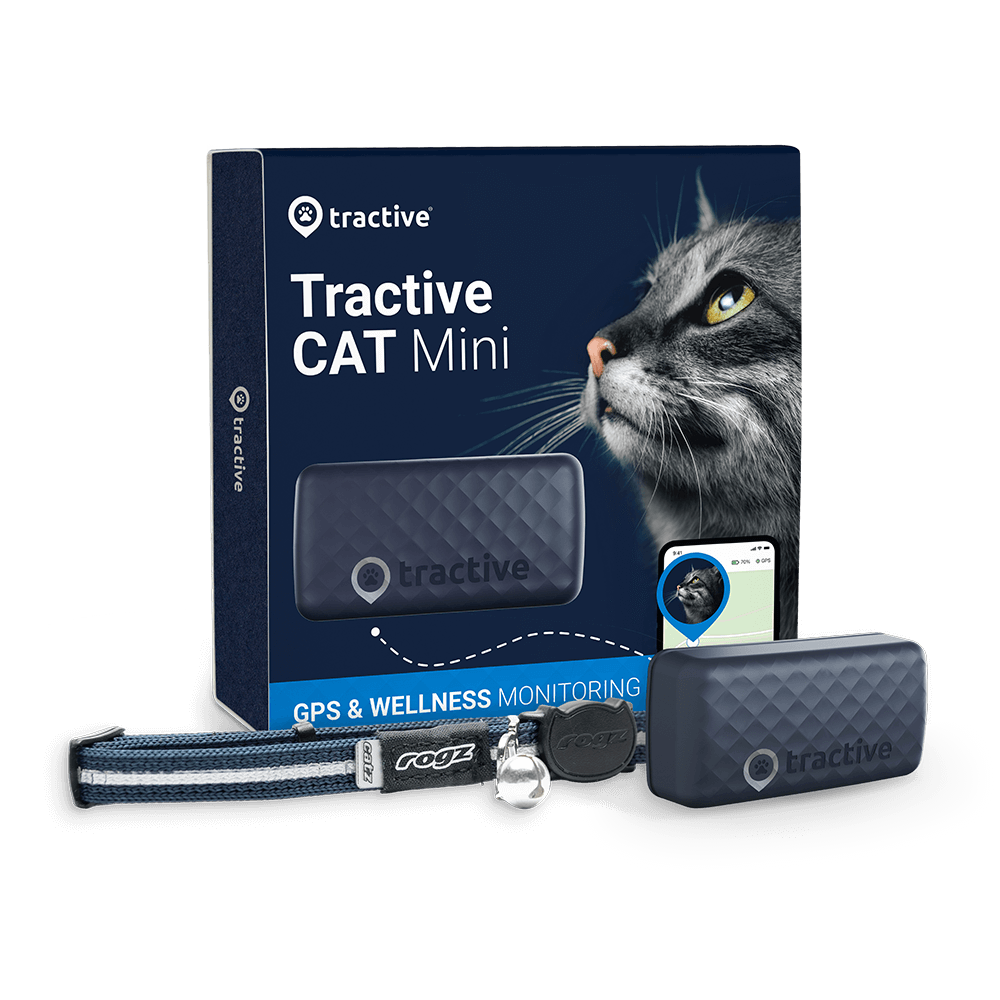
Know everywhere your cat goes
See where they are in real-time, no matter how far they go. Get alerts if they roam too far home. Find out where they’ve been and discover their favorite spots. Let others track with you.
Set up a safe space – and enjoy being a cat grandparent!
Whether it’s come to you as a surprise or you just wanted to make sure – pregnant cats tend to display certain behavioral changes that can help you catch on early.
Including:
- A change in appearance and appetite, including weight gain and other physical changes
- Sleeping more often – or during the times when they’re more normally awake
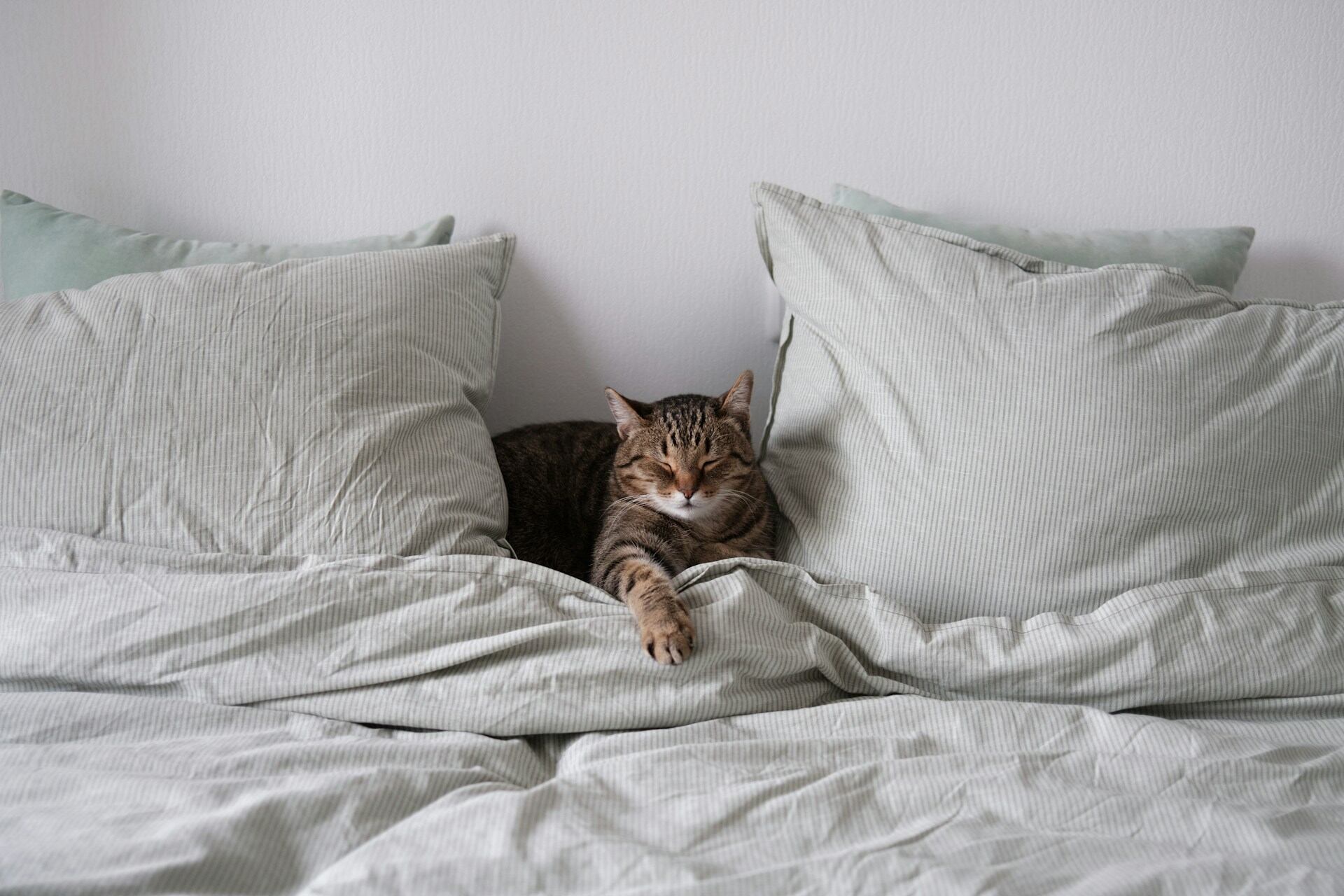
- Nausea and vomiting
- Clinging to you more often – or, on the other hand, hiding away to find a safe spot to deliver their litter
Make sure to stay on top of your vet visits to keep your little buddy healthy. Keep them on a healthy diet with plenty of fluids, rest, chill out time, and tons of cuddles from you.
And most importantly…
Figure out where your cat likes to spend most of their time – so you can help them deliver safely, if it’s the first time for them.
Because when it comes to our furry friends, it’s always worth going the extra mile to keep them healthy, happy, and safe.
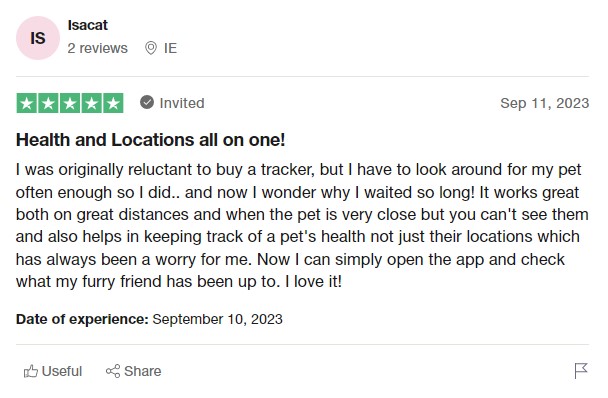
Wrapping up – here’s Dr. Jace King from the Washington Family Veterinary Clinic covering the signs a cat might be pregnant:
And if you’ve liked this post, share it with a friend or loved one – and let’s help build a safer, kinder world for our furry friends together.

